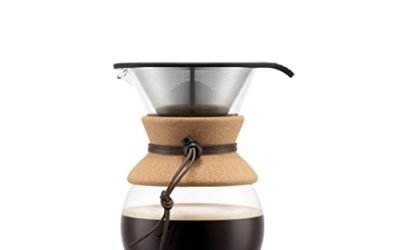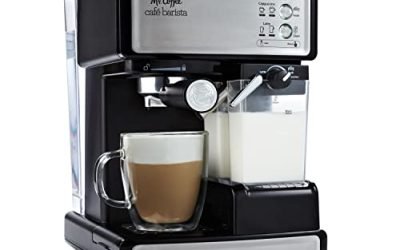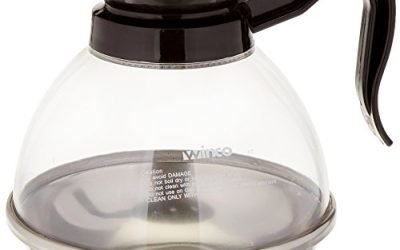Hey there! If you’re anything like me, you’re always on the lookout for that perfect cup of espresso. That rich, velvety taste that instantly perks you up and transports you to a little corner of coffee heaven. But, let’s be real, finding that elusive perfection can be quite the challenge. Well, worry no more because in this blog post, we’re going to unlock the secrets of espresso together. We’ll dive deep into the intricacies and techniques behind brewing the perfect cup, so you can finally satisfy your espresso cravings, right in the comfort of your own home. So, grab your favorite mug and get ready to embrace the magic of espresso. Let’s get started, shall we?
Brew Like a Pro: The Hottest Coffee Recipes for Your Perfect Cup
What is Espresso?
Espresso is a popular coffee brewing method that originated in Italy. It is a concentrated form of coffee that is brewed by forcing hot water through finely ground coffee beans using high pressure. The result is a rich, intense, and flavorful beverage that is loved by coffee enthusiasts worldwide.
How does Espresso Differ from Other Brewing Methods?
While there are various ways to brew coffee, espresso stands out for its unique characteristics. Understanding the key differences between espresso and other brewing methods can help you appreciate this delightful beverage even more. Here’s what sets espresso apart:
Grind Size
Espresso requires a specific grind size that is finer than what is commonly used for other brewing methods. The finer grind allows for more surface area contact between the water and the coffee, leading to a faster extraction. This results in a concentrated, full-bodied flavor profile that is distinct to espresso.
Water Temperature
When brewing espresso, the water temperature plays a crucial role in achieving the desired taste. Ideally, the water temperature should be between 195°F and 205°F (90°C to 96°C). This range ensures optimal extraction of the coffee’s flavors, producing a well-balanced and aromatic cup of espresso.
Extraction Time
Unlike other brewing methods that may take several minutes, espresso extraction is relatively quick. The water is forced through the coffee grounds under high pressure, typically taking around 25 to 30 seconds. This short extraction time ensures that the flavors are extracted efficiently without over-extracting any unwanted bitterness.
Achieving the Perfect Espresso
To achieve the perfect espresso, certain factors need to be considered. Here are some key points to keep in mind:
- Quality Coffee Beans: Start with high-quality coffee beans that are specifically roasted for espresso. Look for reputable brands such as Lavazza Super Crema or Illy Espresso, known for their exceptional flavor profiles.
- Grinder: Invest in a reliable grinder that allows you to adjust the grind size to match the espresso brewing method. The Baratza Sette 270 or the Breville Smart Grinder Pro are excellent choices that provide consistent grind sizes.
- Espresso Machine: Having a good espresso machine is essential. Look for features such as PID temperature control, pressure profiling, and a reliable pump system. The Breville Barista Express or the La Marzocco Linea Mini are popular options that offer exceptional espresso brewing capabilities.
- Water Quality: Pay attention to the water you use. Ideally, use filtered water to ensure that impurities do not interfere with the flavor of your espresso.
- Tamp Pressure: When using a portafilter, make sure to apply consistent pressure when tamping the coffee grounds. Aim for a pressure of around 30 pounds (13.6 kg) to ensure even extraction.
In Summary
Understanding espresso and its unique characteristics is essential for anyone who appreciates a good cup of coffee. By paying attention to the grind size, water temperature, extraction time, and investing in quality equipment, you can enjoy the rich and intense flavors that espresso has to offer. So, go ahead and start your espresso journey with confidence, knowing that the perfect cup is just a few steps away.
Choosing the Right Beans
When it comes to making the perfect espresso, one of the most critical factors is selecting high-quality coffee beans. The type of beans you choose, along with their roast levels and origins, can greatly influence the flavor profile of your espresso. In this blog section, we will delve into the importance of choosing the right beans and provide you with the information you need to make an informed decision.
Types of Beans
There are two primary types of coffee beans: Arabica and Robusta. Understanding the differences between these two varieties is essential in choosing the right beans for your espresso.
Arabica Beans
Arabica beans are known for their superior quality and delicate flavors. They have a lower caffeine content compared to Robusta beans, making them a favorite among coffee enthusiasts who prefer a smoother and more refined taste. Some popular Arabica varieties include:
- Colombian Supremo: Known for its balanced acidity and nutty undertones, Colombian Supremo beans are a popular choice for espresso lovers seeking a well-rounded flavor profile.
- Ethiopian Yirgacheffe: With its vibrant fruity and floral notes, Ethiopian Yirgacheffe beans add a unique and exotic twist to your espresso.
- Costa Rican Tarrazu: These beans offer a vibrant acidity coupled with a rich body, making them an excellent choice for those who enjoy a bright and flavorful espresso.
Robusta Beans
Robusta beans, as the name suggests, are more robust in flavor and contain a higher caffeine content. They are known for their bold and earthy taste, making them a popular choice for espresso blends that require a stronger and more intense profile. Some notable Robusta options include:
- Vietnamese Robusta: These beans are famous for their chocolatey and smoky flavors, adding depth and richness to your espresso.
- Indian Cherry Robusta: With its spicy and nutty undertones, Indian Cherry Robusta beans provide a robust and full-bodied experience.
Roast Levels
The roast level of your coffee beans can greatly impact the taste of your espresso. Whether you prefer a light, medium, or dark roast will depend on your personal preference and desired flavor profile.
Light Roast
Lightly roasted beans retain more of their original flavors and showcase brighter acidity. They often have subtle floral and fruity notes, which can add complexity to your espresso. Light roast beans are ideal for those who enjoy a more delicate and nuanced taste.
Medium Roast
Medium roasted beans strike a balance between acidity and body. They offer a well-rounded flavor profile with a slightly deeper taste compared to light roasts. Medium roast beans are a popular choice for espresso as they provide a good balance of acidity and sweetness.
Dark Roast
Dark roast beans have a bolder and more pronounced flavor. They tend to have lower acidity and a fuller body, often with notes of chocolate and caramel. Dark roast beans are favored by those who prefer a rich and robust espresso experience.
Origins
The origin of your coffee beans can also significantly impact the flavor of your espresso. Different regions have distinct characteristics that contribute to the overall taste profile. Here are a few examples:
Latin American Origins
- Brazilian: Brazilian beans are known for their nutty and chocolatey flavors, offering a smooth and mellow espresso experience.
- Guatemalan: Guatemalan beans often have a bright acidity with fruity and floral undertones, providing a vibrant and lively espresso.
African Origins
- Kenyan: Kenyan beans are celebrated for their intense and complex flavors, with bright acidity, berry notes, and a wine-like aftertaste.
- Ethiopian: Ethiopian beans offer a diverse range of flavor profiles, with some varieties showcasing fruity and citrusy notes, while others exhibit more floral and tea-like characteristics.
Mastering the Espresso Machine
So you’ve decided to take your coffee game to the next level and invest in an espresso machine. Congratulations! With a little practice and the right knowledge, you’ll soon be brewing barista-quality espresso right in the comfort of your own home. In this blog section, we will guide you through the various components of an espresso machine and provide tips and tricks to help you make the most of your machine.
Understanding the Components
Before we dive into the operation of an espresso machine, it’s important to understand its key components. Here are the main parts you’ll encounter:
- Portafilter: This is the handle-like device that holds the coffee grounds during brewing. It attaches to the group head and is responsible for extracting the espresso.
- Group Head: The group head is where the portafilter attaches to the machine. It distributes hot water evenly over the coffee grounds, ensuring proper extraction.
- Boiler: The boiler heats the water used for brewing. Depending on the machine, there may be one or more boilers, each with a specific purpose.
- Steam Wand: The steam wand is used for frothing milk to create lattes, cappuccinos, and other milk-based drinks. It releases steam when activated.
- Grinder: While not a part of every espresso machine, a built-in grinder is a valuable addition. It allows you to grind fresh coffee beans just before brewing, ensuring maximum flavor.
Operating the Machine
Now that you’re familiar with the components, let’s go over the steps to operate an espresso machine:
- Preheating: Before brewing, it’s essential to preheat your espresso machine. This ensures that the water temperature is consistent throughout the brewing process. Turn on the machine and allow it to heat up for at least 20 minutes.
- Grind Settings: If your machine has a built-in grinder, adjust the grind settings according to your coffee beans and desired extraction. Finer grinds are suitable for stronger, more intense espresso, while coarser grinds are better for milder flavors.
- Dosing: Once you have the desired grind size, measure out the appropriate amount of coffee grounds for your shot. The general rule of thumb is around 18-20 grams of coffee for a double shot.
- Tamping: After dosing, distribute the coffee grounds evenly in the portafilter and tamp them down firmly. This ensures even extraction and prevents channeling.
- Brewing: Attach the portafilter to the group head and initiate the brewing process. The ideal brew time is around 25-30 seconds, during which the machine should maintain a brewing pressure of 9 bars.
- Milk Frothing: If you’re making a milk-based drink, now is the time to use the steam wand. Submerge the wand into a pitcher of cold milk and open the steam valve. Position the wand just below the surface of the milk, creating a whirlpool motion to achieve a velvety texture.
Tips and Tricks
To help you master your espresso machine, here are some additional tips and tricks:
- Use freshly roasted coffee beans for the best flavor. Look for reputable brands like Intelligentsia or Blue Bottle Coffee.
- Experiment with different grind sizes and brewing times to find your preferred flavor profile.
- Clean your machine regularly to prevent buildup and ensure optimal performance. Refer to the manufacturer’s instructions for specific cleaning recommendations.
- Invest in a quality tamper to achieve consistent tamping pressure and improve extraction.
- Consider using a scale to measure your coffee grounds and water, ensuring precise ratios for a perfect shot every time.
By following these guidelines and practicing, you’ll become an espresso aficionado in no time. Enjoy the process, and don’t be afraid to experiment and personalize your brews to suit your taste buds.
Now, go ahead, fire up your Ninja Coffee Maker XL Pro or Salomon Speedcross 5 Running Shoes, and create espresso magic in your own kitchen!
Tamping Technique: The Key to a Perfect Espresso
When it comes to making an exceptional espresso, the tamping technique plays a crucial role. Tamping is the process of evenly compressing the coffee grounds in the portafilter basket, which ultimately affects the extraction and flavor of your espresso shot. Here’s a step-by-step guide to help you master the art of tamping:
- Grind the beans: Start by grinding your coffee beans to the appropriate fineness. This will depend on the type of espresso machine you’re using, but generally, a fine to medium-fine grind works best.
- Distribute the grounds evenly: Before tamping, ensure that the coffee grounds are evenly distributed in the portafilter basket. Uneven distribution can lead to an uneven extraction. You can use a distribution tool or simply tap the side of the portafilter to achieve an even bed of grounds.
- Apply downward pressure: Place the tamper on top of the coffee grounds and apply downward pressure. The tamper should fit snugly in the portafilter basket to ensure an even tamp. Apply firm and consistent pressure, but avoid pressing too hard, as it can lead to over-extraction.
- Twist and polish: As you apply pressure, give the tamper a slight twist to polish the surface of the coffee grounds. This helps create a level and compact puck, which promotes a more even extraction.
Remember, consistency is key when tamping. Practice and experiment with different pressure levels until you find the perfect technique that works for you.
Adjusting Extraction Time for the Perfect Balance
Once you have mastered the tamping technique, it’s time to focus on the extraction. Extraction refers to the process of water passing through the coffee grounds, extracting the flavors and aromas. By adjusting the extraction time, you can achieve the perfect balance between bitterness and sweetness in your espresso. Here are some tips to help you fine-tune your extraction:
- Start with the right parameters: Each espresso machine has its own recommended extraction parameters, which include the grind size, water temperature, and pressure. Follow the manufacturer’s guidelines to ensure a good starting point.
- Monitor the flow rate: During the extraction, keep an eye on the flow rate of the espresso. Ideally, the coffee should flow out in a steady, thin stream known as the “mouse tail.” If the flow is too fast, it could result in a weak and under-extracted shot. On the other hand, a slow flow may lead to over-extraction and a bitter taste.
- Adjust the grind size: If your extraction is too fast, try a finer grind to slow down the flow rate. Conversely, if the extraction is too slow, a coarser grind can help increase the flow. Remember to make small adjustments and test the results before making drastic changes.
- Taste and adjust: The ultimate test of a well-extracted espresso is in the taste. Pay attention to the flavors and balance of bitterness and sweetness. If the shot is too bitter, try reducing the extraction time. If it lacks depth, increase the extraction time slightly. Keep experimenting until you find the perfect balance that suits your preference.
By mastering the tamping technique and adjusting the extraction time, you can elevate your espresso game and create a truly exceptional cup of coffee. Remember, practice makes perfect, so don’t be afraid to experiment and fine-tune your technique. Happy brewing!
Note: The information provided in this article is based on general principles and may vary depending on the specific espresso machine and coffee beans used. Always refer to the manufacturer’s instructions and recommendations for best results.
Disclaimer: The product names mentioned in this article are for illustrative purposes only and do not constitute an endorsement or promotion of any specific brand or model.
Discover the Perfect Brew: Wrap-Up and Final Thoughts
In conclusion, by delving into the essentials of brewing, selecting top-notch beans, mastering your espresso machine, and honing your tamping and extraction skills, you can unlock the secrets of espresso. Armed with these tips, you’ll have the power to create a delectable and fulfilling cup of espresso right in your own home. So go ahead, embrace the art of espresso-making and savor the rich flavors that await you!














Great question! One tip for achieving a consistent tamp is to apply even pressure on the coffee grounds using a tamper with a flat and level base. Additionally, make sure to distribute the grounds evenly in the portafilter before tamping. This will help ensure an even extraction.
Are there any recommended resources or books for further reading on the subject of espresso making?